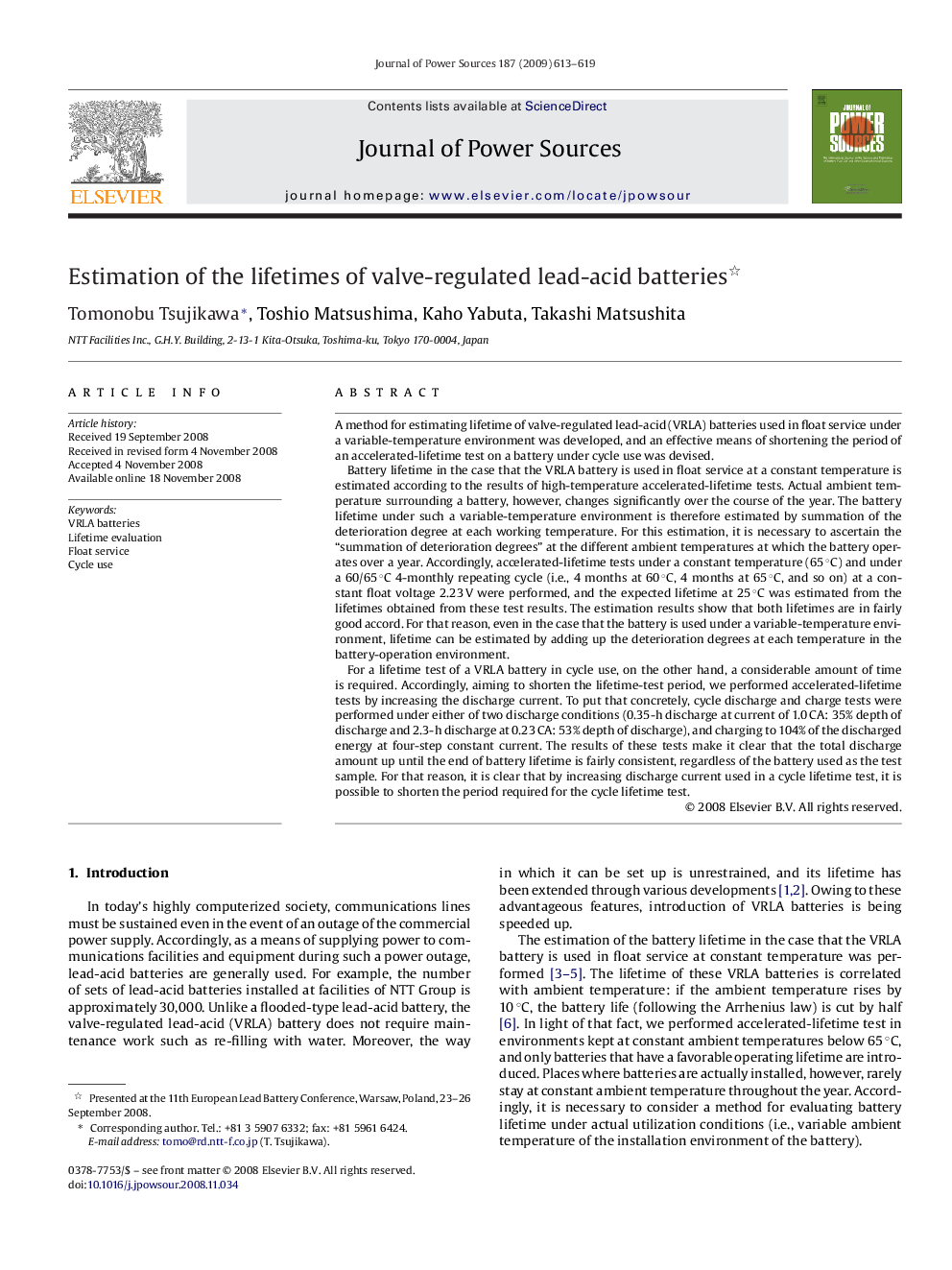| Article ID | Journal | Published Year | Pages | File Type |
|---|---|---|---|---|
| 1285267 | Journal of Power Sources | 2009 | 7 Pages |
A method for estimating lifetime of valve-regulated lead-acid (VRLA) batteries used in float service under a variable-temperature environment was developed, and an effective means of shortening the period of an accelerated-lifetime test on a battery under cycle use was devised.Battery lifetime in the case that the VRLA battery is used in float service at a constant temperature is estimated according to the results of high-temperature accelerated-lifetime tests. Actual ambient temperature surrounding a battery, however, changes significantly over the course of the year. The battery lifetime under such a variable-temperature environment is therefore estimated by summation of the deterioration degree at each working temperature. For this estimation, it is necessary to ascertain the “summation of deterioration degrees” at the different ambient temperatures at which the battery operates over a year. Accordingly, accelerated-lifetime tests under a constant temperature (65 °C) and under a 60/65 °C 4-monthly repeating cycle (i.e., 4 months at 60 °C, 4 months at 65 °C, and so on) at a constant float voltage 2.23 V were performed, and the expected lifetime at 25 °C was estimated from the lifetimes obtained from these test results. The estimation results show that both lifetimes are in fairly good accord. For that reason, even in the case that the battery is used under a variable-temperature environment, lifetime can be estimated by adding up the deterioration degrees at each temperature in the battery-operation environment.For a lifetime test of a VRLA battery in cycle use, on the other hand, a considerable amount of time is required. Accordingly, aiming to shorten the lifetime-test period, we performed accelerated-lifetime tests by increasing the discharge current. To put that concretely, cycle discharge and charge tests were performed under either of two discharge conditions (0.35-h discharge at current of 1.0 CA: 35% depth of discharge and 2.3-h discharge at 0.23 CA: 53% depth of discharge), and charging to 104% of the discharged energy at four-step constant current. The results of these tests make it clear that the total discharge amount up until the end of battery lifetime is fairly consistent, regardless of the battery used as the test sample. For that reason, it is clear that by increasing discharge current used in a cycle lifetime test, it is possible to shorten the period required for the cycle lifetime test.
